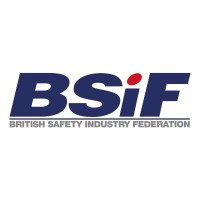The UK fall protection industry has come together in a major show of collaboration to support the rollout of BS8681:2024, a new standard that sets rigorous competency requirements for the design, installation, and inspection of personal fall protection systems. This proactive industry-led initiative marks a significant step forward in improving workplace safety at height.

BS8681:2024 introduces a comprehensive framework of best practices in fall protection, covering key areas including:
- Equipment Selection & Installation– Ensuring the proper use of fall protection systems to prevent accidents.
- Training & Competency Requirements– Defining the necessary skills and qualifications for individuals working within the field.
- Inspection & Maintenance Protocols– Establishing clear guidelines for the routine assessment of equipment integrity.
However, what truly sets the implementation of the new standard apart is the level of industry support behind it, from trade bodies to manufacturers, training providers, and awarding organisations.
“The rollout of BS8681:2024 represents more than just a change in standards; it’s a collective commitment to safer work environments,” said Alan Murray of BSIF, who led the coordination efforts. “By working together, the industry is accelerating adoption and ensuring that organisations are fully equipped to meet the new requirements.”
Industry collaboration in action
A core group of leading organisations, including 8point8 Training, Kee Safety, Hydrajaws, Smart Awards, and SFS, have joined forces to ensure that training, resources, and qualification pathways are aligned with the new standard to ensure a seamless transition for organisations adopting BS8681:2024
- 8point8 Training has developed state-of-the-art training facilities in Doncaster, supported by hands-on product and system training provided by manufacturers.
- Kee Safety, Hydrajaws, and SFS have supplied equipment, technical training, and test materials to enable real-world practice aligned to BS8681:2024.
- Smart Awards has developed new NVQ and apprenticeship assessments to meet evolving industry needs.
“Hydrajaws was thrilled to contribute by training 8point8 staff in the latest testing methods and data recording tools,” said Adrian Morgan of Hydrajaws, underlining the role of up-to-date practices in maintaining compliance.

Equipping the workforce
The rollout also focuses on upskilling the workforce. The first learners are completing the Level 3 NVQ in Access and Rigging – Fall Protection, and others are progressing through the new Level 3 Fall Protection Technician apprenticeship.
“Our Group recognises the importance of training and development of our fall protection technicians and inspectors,” said Graham Willmott of Kee Safety. “As soon as the apprenticeship program was available, we committed to the program and enrolled our delegates.” Kee Safety is already seeing the benefits with individuals now starting to complete their apprenticeships and enter their final assessments.
Through equipment donations, specialised training, and expert-led support, companies like SFS have ensured that learners can apply their skills on actual fall protection systems. “SFS was delighted to have the opportunity to support 8point8 Training Ltd with their delivery of the Level 3 Fall Protection Technician Apprenticeship and the Level 3 NVQ Diploma in Accessing and Rigging,” said Jonathan Seymour of SFS. The safety solutions and fixings supplier provided sample systems, training, and materials which are essential tools that help apprentices understand installation and compliance in a controlled environment.
With BS8681:2024 now live, the industry is not only embracing higher standards but actively ensuring that every level of the workforce has the tools, knowledge, and qualifications to meet them. “These qualifications are raising the industry’s standards,” said David Ravensdale of 8point8 Training, “ensuring that current and future professionals are fully equipped to handle the complexities of installing and maintaining fall protection systems.”
Murray concludes: “As more professionals achieve advanced qualifications, the industry will continue to evolve, innovate, and strengthen safety standards, creating a highly skilled workforce capable of delivering excellence in fall protection.”
For a more detailed article on the implementation of BS8681:2024, visit: https://www.bsif-heightsafetygroup.org/bs86812024-elevating-fall-protection-standards-and-industry-collaboration/
For the BSIF’s webinar on the new standard BS 8681:2024 Personal fall protection equipment, visit: https://www.youtube.com/watch?v=Ou0uNfElwcA
















